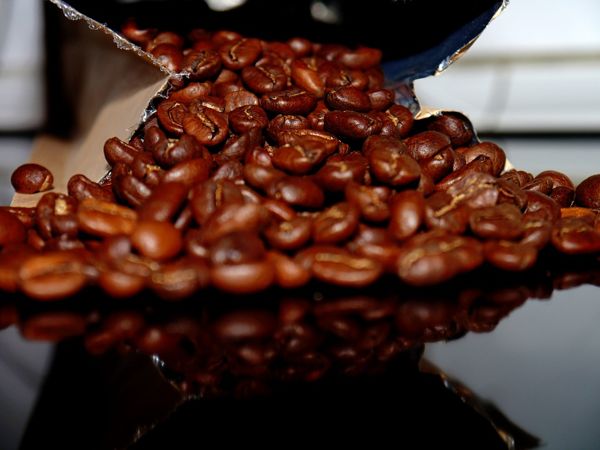Coffee roasters are taking their production process into the next level to handle the rising demand for coffee products in the market. With this great demand, lots and lots of coffee are being exported to other countries. So, coffee roasters are finding ways to increase and improve their coffee production for them to get their products out to coffee shops and grocery stores.

But, the battle does not stop once you succeed in getting your products into grocery stores. You need to make your coffee products stand out from the competition once on the shelves so more consumers will buy them. Start with your product’s packaging materials.
In this short guide, we have compiled your packaging options and some tips to help you start with. So keep on reading to know more!
4 Common Coffee Packaging Materials
Coffee is a delicate product. It is sensitive to moisture, heat, air, and light so you should keep it fresh to fully preserve its flavor. The packaging materials you will be using should ensure the safety of your product and help in extending its shelf life. Below are the four common materials you can use to package your coffee products.
#1 Tin Cans
You can opt for tin cans for heavier coffee packages. Tin cans are common in many brands because they prevent moisture which helps in maintaining the freshness of your coffee
#2 Aluminum Foil Bags
Aluminum foil bags have been the traditional packaging materials of various brands. This is because, like tin cans, they also prevent moisture from infiltrating the package.
#3 Paper bags
These materials are more sustainable and environmentally-friendly. You can further line up paper bags with films to keep your coffee products fresh.
#4 Film bags
Thanks to modern technology for the creation of film bags. These new innovative materials were able to work efficiently for a lot of brands. They enable flexibility in the packaging design because you can add different finishes to give your package a distinct twist.
4 Common Coffee Bag Packaging Types
Aside from the packaging material for your coffee product, there are also other things you need to consider in the design process. These things include your coffee bag’s shape and the sealing types you will be choosing. You will find the four major types of bag packaging for coffee products in the following sections.
#1 Side-Gusset Bags
These are traditional coffee bags but are still used in modern packaging designs. They are not only cheap and durable but they can also support heavier coffee weights. But, side-gusset bags do not come with resealable zippers. So you will have to close these bags by folding or rolling the edges.
#2 Stand-Up Pouches
Stand-up pouches are also referred to as doypacks. They offer affordable but quality packaging for small to medium-sized coffee businesses. These pouches have triangular shapes and are often coupled with resealable zippers to help keep your coffee fresh.
#3 Flat-Bottom Bags
Flat-bottom bags are square-shaped bags and are the most popularly used types of packages in the coffee packaging industry. They provide greater efficiency when it comes to the storage and shipment of heavier coffee packages. They are a little pricey but no worries as they are worth your money considering that flat-bottom bags are also eco-friendly.
#4 Pillow Bags
These types of bags are ideal for stand up pouches for coffee packaging that are meant for single servings. Although there are various sizes of these bags in which you can choose from, the majority of them are smaller compared to other coffee bags. But, do note that pillow bags cannot stand vertically on their own so they will need something to support them.
2 Tips for a More Efficient Roasting Production
Below are two tips you should consider if you want to increase the efficiency of your roasting production.
#1 Get Rid of Issues Associated With Your Sources of Coffee Beans
It is good to use the latest technologies for your coffee production. But, remember that the quality of the coffee beans you use will directly impact your production’s schedule. You need to keep watch of errors during shipping, reduced quality of coffee beans delivered to you, and production failures.
Also, evaluate your policies and contracts with growers, brokers, and others to reduce exportation issues. Visit coffee farms and check how they process their coffee. Then, make the necessary adjustments to keep the speed of your coffee production line.
#2 Invest in the Latest Innovative Packaging Solutions to Maintain Your Coffee’s Freshness
Ensuring the coffee product’s freshness should be every roaster’s top priority when they deliver their products to their buyers. Once the coffee beans have been ground or roasted, their shelf lives are significantly reduced.
So, innovative coffee packaging machines, such as can filling equipment, are a necessity especially if you have high production demands. Packaging machines can provide reliable operation and offer higher quality and seal integrity to help your products keep up with the current demands.
Conclusion
Getting more of your coffee products to the market will go a long way. Your packaging design will have a huge impact on this. But, besides an eye-catching packaging design, you need to create a functional one that will protect your product. This ensures that your product is delivered in its most desirable condition. Lastly, you also need to know how to properly label your coffee packaging.
And that’s it! Hopefully, this guide was able to help you a bit with your coffee packaging. Cheers!

If you are a business owner and want to promote your business, then sms marketing is best way and SMS Plus is leading Bulk SMS Service Provider in Delhi ncr and all over India.offers bulk sms service for their clients at cost effective price. For getting more information, Dial 9999441707.